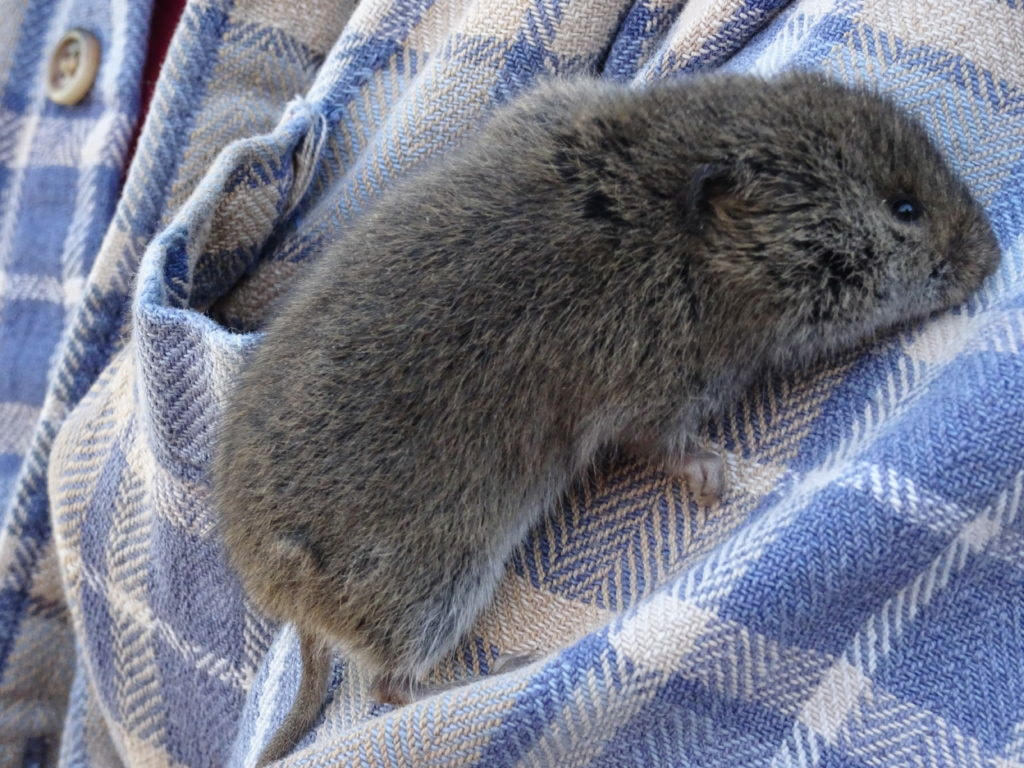Vole Troubles? Efficient Control Steps for Assurance
Vole Troubles? Efficient Control Steps for Assurance
Blog Article
Understanding Vole Bug Control: Extensive Insights on Infestation Avoidance and Treatment Methods
By acknowledging the refined indicators of vole infestation early on, we can take aggressive actions to prevent prevalent damages. In this conversation, we will certainly discover the subtleties of vole habits, dive into the identification of problem signs, and uncover the most effective avoidance and treatment techniques.
Understanding Vole Habits
Checking out the foraging patterns of voles provides useful insights right into their actions and habitat preferences. By observing their foraging habits, researchers can gain a much better understanding of where voles favor to develop their environments and the extent of their ecological effect.
Study shows that voles display selective feeding routines, preferring tubers, seeds, and roots - vole lawn damage. This nutritional choice influences their foraging patterns, leading them to locations rich in vegetation and ground cover. In addition, voles are understood to develop intricate passage systems for foraging and nesting functions, showing a high degree of versatility to their environments
Understanding vole behavior is necessary for executing targeted insect control procedures that disrupt their environment preferences and foraging tasks. By examining their actions, experts can develop extra reliable avoidance and treatment techniques to take care of vole invasions.
Identifying Signs of Vole Problem
Vole problems can be spotted by recognizing specific signs of their presence in a location. One of one of the most common indications of a vole invasion is the visibility of surface area paths. Voles create networks of slim pathways on the ground that are generally around 2 inches large. These runways are frequently located in verdant areas or below compost or ground cover where voles can move openly and look for food.
One more key indicator of vole problem is the presence of little burrow openings in the ground. Voles dig superficial burrow systems with numerous entries and leaves. These burrows function as shelter and nesting websites for the voles. In addition, voles are recognized to leave eaten plant stems, roots, and light bulbs near their burrow openings, suggesting their feeding activity in the area.
In addition, vole droppings can likewise signify their presence (vole control). Vole droppings are tiny, brown, and cylindrical in form, looking like grains of rice. Locating these droppings along runways or near burrow openings can confirm a vole infestation. By being vigilant for these indications, homeowner can quickly deal with vole problems and avoid more damage.
Applying Proactive Avoidance Measures
To successfully minimize the risks connected with vole invasions, home owners can proactively execute a variety of preventive measures targeted at safeguarding their landscapes and gardens. One vital action is to preserve a well-trimmed yard and on a regular basis eliminate tall weeds and thick plants, as voles are attracted to locations providing adequate cover. Mounting obstacles such as hardware fabric below ground around prone locations like yard beds can additionally assist protect against vole intrusion. Additionally, maintaining garden areas website link clean and lessening mess where voles can hide or nest is crucial in reducing their existence.
Moreover, using all-natural click reference vole deterrents like castor oil-based repellents or killer pee can function as efficient safety nets. It is likewise suggested to routinely check outdoor rooms for any type of indicators of vole task, such as runways or burrow openings, to deal with potential invasions promptly. By adopting these proactive avoidance techniques, homeowner can considerably minimize the probability of vole damage and preserve the health and aesthetics of their landscapes.
Effective Therapy Approaches
Incorporating targeted trapping methods and using authorized rodenticides are necessary parts of efficient treatment techniques for managing vole problems. Routine surveillance and upkeep are additionally crucial facets of effective therapy techniques to make certain that vole populations are kept under control. By incorporating trapping, rodenticides, habitat modification, and consistent tracking, reliable vole parasite control can be accomplished.

Monitoring and Upkeep Tips
Routine tracking permits for the early discovery of vole activity, allowing punctual treatment before problems worsen. To effectively keep an eye on vole populaces, strategically positioned traps can be made use of in vole runways or near burrow entryways.
Furthermore, preserving a clean and well-kept landscape is vital in vole avoidance. Clearing up away particles, such as heaps of wood or thick plant life, removes prospective vole environments. Regularly mowing lawns and cutting plants aids reduce vole hiding places and reduces their access to food sources.

Verdict
Finally, understanding vole pest control needs a strong understanding of vole actions, the capacity to identify indicators of infestation, applying positive avoidance actions, efficient treatment strategies, and regular tracking and maintenance. By taking a thorough method to vole control, people can properly take care of and stop problems, ultimately safeguarding their home and bordering setting from damages triggered by these tiny rats.
In this conversation, we will certainly discover the nuances of vole behavior, dive right into the recognition of problem indications, and reveal the most effective prevention and treatment approaches.Including targeted capturing techniques and using accepted rodenticides are vital components of effective therapy methods for handling vole invasions. To efficiently keep an eye on vole populaces, strategically positioned traps can be utilized in vole runways or near burrow entryways. Checking and fixing any type of problems to these frameworks makes sure that vole control continues to be efficient in protecting residential or commercial properties from invasions. By including these surveillance and Look At This maintenance practices right into a comprehensive vole insect control plan, people can successfully manage vole populations and secure their properties from damage.
Report this page